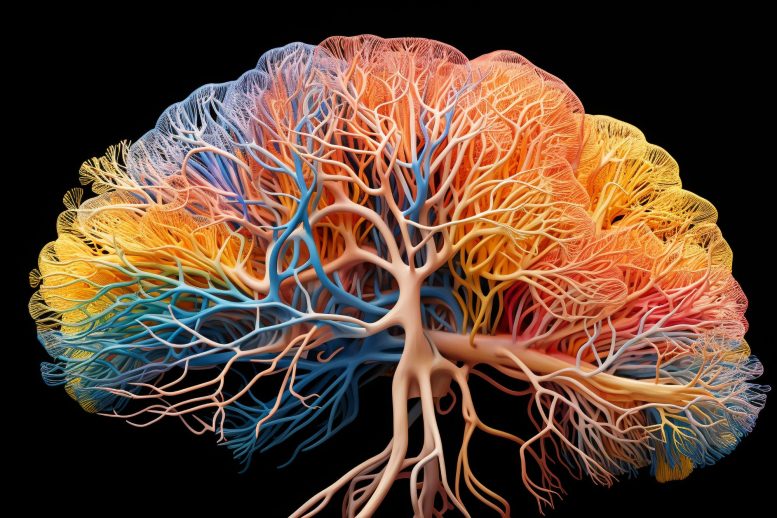
Incredibly detailed cell maps help pave the way for a new generation of treatments.
A group of international scientists have mapped the genetic, cellular, and structural makeup of the human brain and the nonhuman primate brain. This understanding of brain structure, achieved by funding through the National Institutes of Health’s Brain Research Through Advancing Innovative Neurotechnologies® Initiative, or The BRAIN Initiative®, allows for a deeper knowledge of the cellular basis of brain function and dysfunction, helping pave the way for a new generation of precision therapeutics for people with mental disorders and other disorders of the brain. The findings appear in a compendium of 24 papers across Science, Science Advances, and Science Translational Medicine.
“Mapping the brain’s cellular landscape is a critical step toward understanding how this vital organ works in health and disease,” said Joshua A. Gordon, M.D., Ph.D., director of the National Institute of Mental Health. “These new detailed cell atlases of the human brain and the nonhuman primate brain offer a foundation for designing new therapies that can target the specific brain cells and circuits involved in brain disorders.”
Key Findings and Insights
The 24 papers in this latest BRAIN Initiative Cell Census Network (BICCN) collection detail the exceptionally complex diversity of cells in the human brain and the nonhuman primate brain. The studies identify similarities and differences in how cells are organized and how genes are regulated in the human brain and the nonhuman primate brain. For example:
- Three papers in the collection present the first atlas of cells in the adult human brain, mapping the transcriptional and epigenomic landscape of the brain. The transcriptome is the complete set of gene readouts in a cell, which contains instructions for making proteins and other cellular products. The epigenome refers to chemical modifications to a cell’s DNA and chromosomes that alter the way the cell’s genetic information is expressed.
- In another paper, a comparison of the cellular and molecular properties of the human brain and several nonhuman primate brains (chimpanzee, gorilla, macaque, and marmoset brains) revealed clear similarities in the types, proportions, and spatial organization of cells in the cerebral cortex of humans and nonhuman primates. Examination of the genetic expression of cortical cells across species suggests that relatively small changes in gene expression in the human lineage led to changes in neuronal wiring and synaptic function that likely allowed for greater brain plasticity in humans, supporting the human brain’s ability to adapt, learn, and change.
- A study exploring how cells vary in different brain regions in marmosets found a link between the properties of cells in the adult brain and the properties of those cells during development. The link suggests that developmental programming is embedded in cells when they are formed and maintained into adulthood and that some observable cellular properties in an adult may have their origins very early in life. This finding could lead to new insights into brain development and function across the lifespan.
- An exploration of the anatomy and physiology of neurons in the outermost layer of the neocortex—part of the brain involved in higher-order functions such as cognition, motor commands, and language—revealed differences in the human brain and the mouse brain that suggest this region may be an evolutionary hotspot, with changes in humans reflecting the higher demands of regulating humans’ more complex brain circuits.
The core aim of the BICCN, a groundbreaking effort to understand the brain’s cellular makeup, is to develop a comprehensive inventory of the cells in the brain—where they are, how they develop, how they work together, and how they regulate their activity—to better understand how brain disorders develop, progress, and are best treated.
“This suite of studies represents a landmark achievement in illuminating the complexity of the human brain at the cellular level,” said John Ngai, Ph.D., director of the NIH BRAIN Initiative. “The scientific collaborations forged through BICCN are propelling the field forward at an exponential pace; the progress—and possibilities—have been simply breathtaking.”
The census of brain cell types in the human brain and the nonhuman primate brain presented in this paper collection serves as a key step toward developing the brain treatments of the future. The findings also set the stage for the BRAIN Initiative Cell Atlas Network, a transformative project that, together with two other large-scale projects—the BRAIN Initiative Connectivity Across Scales and the Armamentarium for Precision Brain Cell Access—aim to revolutionize neuroscience research by illuminating foundational principles governing the circuit basis of behavior and informing new approaches to treating human brain disorders.